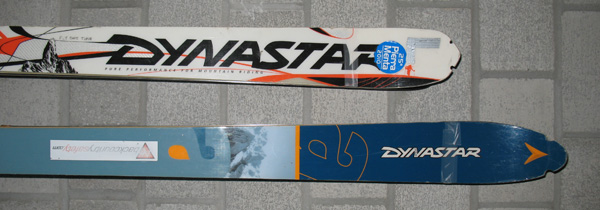Looks like all skimo companies have been pretty busy lately because I don’t even know where to begin with this gear summary.
Let’s start with something you might have already spotted on Skintrack few weeks ago.
La Sportiva Syborg line
The new La Sportiva Syborg boots and skis should be quite exciting as they will bring more competition into the affordable-race-gear category.
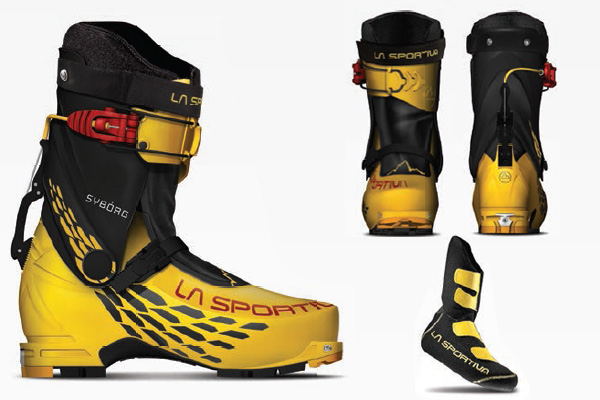
The Syborg boots should weigh 800g at size 27. See this article for more details on these boots and their sibling Syborg skis.
Scarpa Alien 2.0
Probably, the most exciting news is that Scarpa will finally bring a full carbon skimo race boot to the market! This is their stab at the feather weights such as Pierre Gignoux Morpho or La Sportiva Stratos Cube boots (or Dynafit RC1… see below).
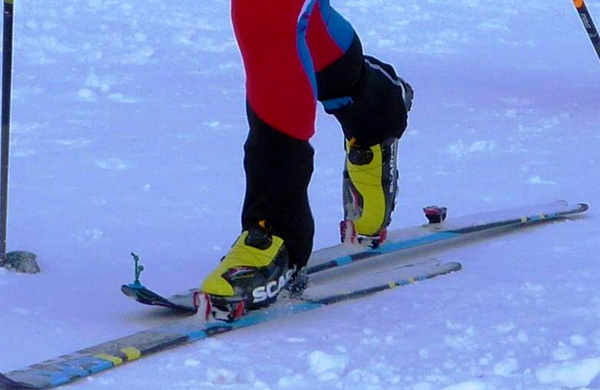
As you can see, the Scarpa Alien 2.0 resemble more a soccer shoe than a skimo boot but that’s maybe because they are meant to make you to kick some ass. Their weight should be around 600g for size 27 or so. More pics can be found on WildSnow.
Perhaps the coolest feature of these boots is not the full carbon but the cuff vertical locking mechanism which locks the boot into a ski mode automatically when you step into your heel bindings! This feature is shared with Scarpa’s ski touring model EVO F1 pictured bellow.
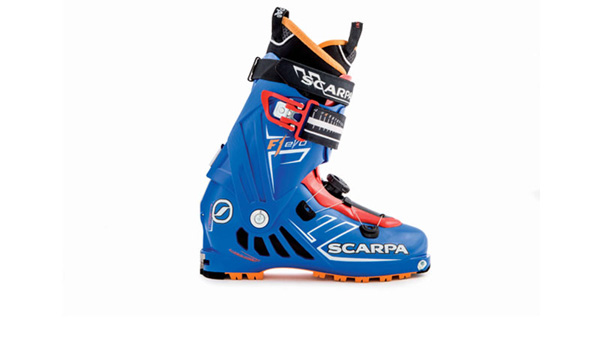
And here is a photo from 2010 when only very few people had the first ever Alien boots. While still testing them, Florent Troillet (one of skimo’s past greats), beat Kilian Jornet for the 2010 World Championship individual title, but as you can see he was clearly instructed to keep the BOA system a secret.
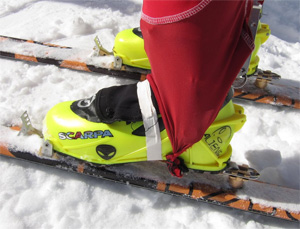
Dynafit: redesigns + Pierre Gignoux boots and bindings as RC1
As of a year ago, my personal feeling was that for Pierre Gignoux to survive the evolution war of the big skimo brands he will need to sell his company to one of them. It didn’t quite happen but it came close – Pierre Gignoux licensed his Morpho 400 boots and bindings to Dynafit who will bring them to the market under the “RC1” label for next season.
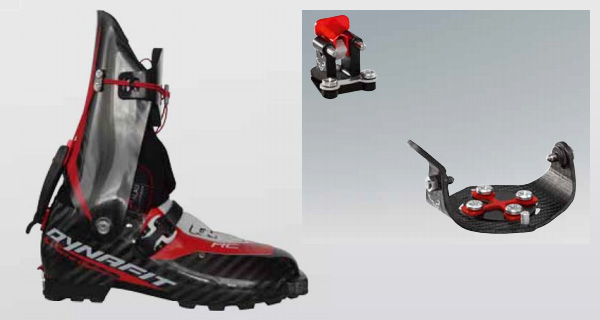
The weights should be the same (or very close) to the originals – RC1 boots at 500g for size 26 and RC1 bindings at 75g.
» Here you can compare all lightest boots currently on the market.
Lots of new gear will be coming from Dynafit for the next season, however, the rest of their skimo racing lineup looks to be getting mostly a visual face-lift.
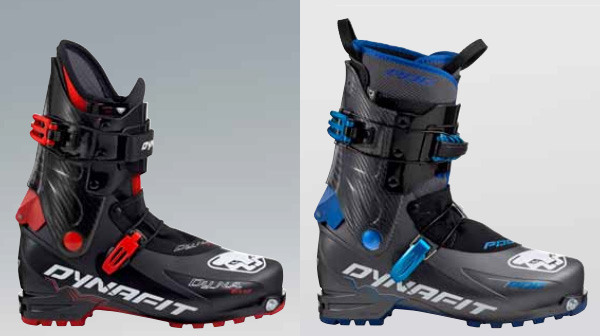
Two new things for both boots will be:
- new fully sole covering EVO-PDG sole ruber,
- and forward lean inserts to customize your ski position
Their racing skis seem to mostly only get a new top sheets as dimensions and weight are virtually the same, however, the claim is they have a “flex tip” feature like their current Cho Oyu skis. And so the DyNA Race skis will be 710g at 161cm (99-65-80) and the PDG 790g at 161cm (99-65-80).
» Here you can compare all lightest skis that are currently buy.
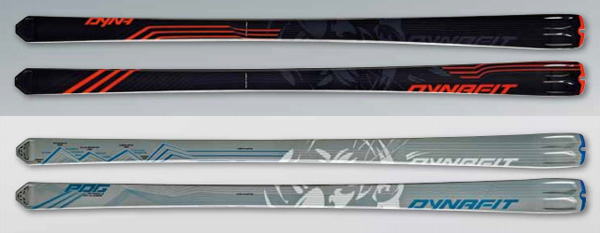

Hagan ZR bindings
These bindings are not a new item as they were introduced this season, however, they didn’t receive as much attention as other gear so I want to shed some light on them especially since I am personally using them.
Not an engineering inovation from Hagan themselves but rather a smart re-branding move like Dynafit with RC1 boots. Originally, these are ATK SL-R bindings which means top quality, but since ATK is not interested in bringing their products to the North American market Hagan decided to do it for us, skimo racers.

I put in about 10,000m on them for up and 10,000m for down so far. More testing is obviously needed but given my previous long term experience with ATK bindings I don’t expect major surprises.
» And here you can compare all lightest skimo bindings you can currently buy.


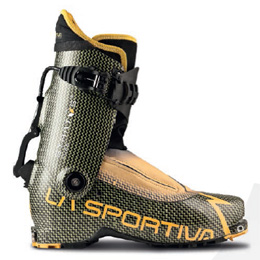

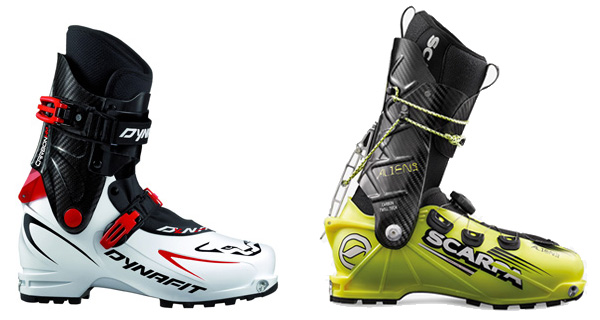
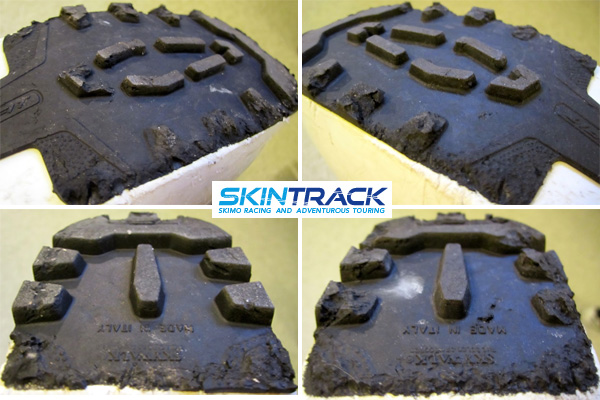

 It’s only about five years since there was only one ski mountaineering boot on the market weighing under 900 grams. Pierre Gignoux’s XP500 was about 600g with a liner and almost a pound lighter than its nearest competitor.
It’s only about five years since there was only one ski mountaineering boot on the market weighing under 900 grams. Pierre Gignoux’s XP500 was about 600g with a liner and almost a pound lighter than its nearest competitor.
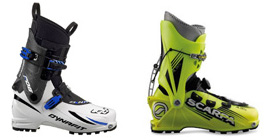 Another benefit brought to the skimo community as a side effect of more innovation and competition are cheaper models from Dynafit and Scarpa.
Another benefit brought to the skimo community as a side effect of more innovation and competition are cheaper models from Dynafit and Scarpa.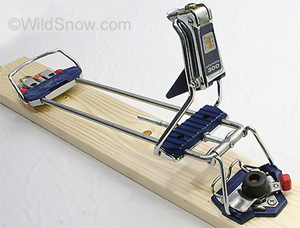
 Few years later I got a brand new ski touring kit which was also much more suitable for racing. This consistent of one of the lightest boots at the time – the Dynafit TLT 3 skied like shit and was about 1500g per boot. On recommendations about durability my bindings became Dynafit TourLite Tech (later referred to as Classics) which were an astounding 340g per foot, and they were mounted on 178cm Dynastars (around 70mm wide and 1400g per ski). I placed 3rd at Slovak junior nationals on that gear.
Few years later I got a brand new ski touring kit which was also much more suitable for racing. This consistent of one of the lightest boots at the time – the Dynafit TLT 3 skied like shit and was about 1500g per boot. On recommendations about durability my bindings became Dynafit TourLite Tech (later referred to as Classics) which were an astounding 340g per foot, and they were mounted on 178cm Dynastars (around 70mm wide and 1400g per ski). I placed 3rd at Slovak junior nationals on that gear.